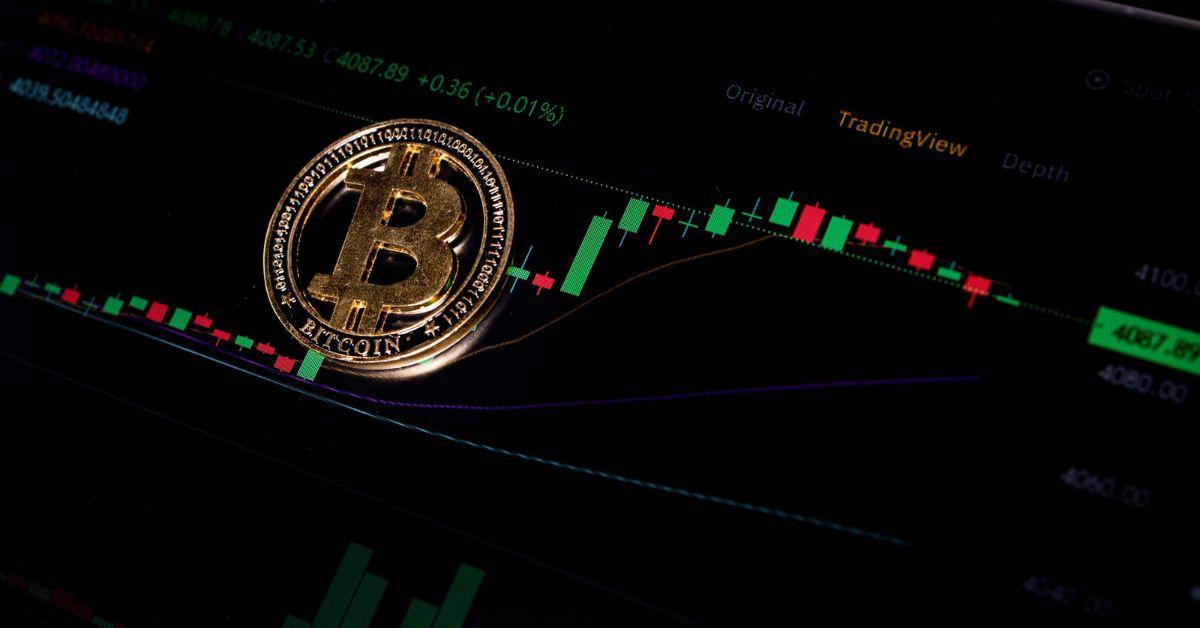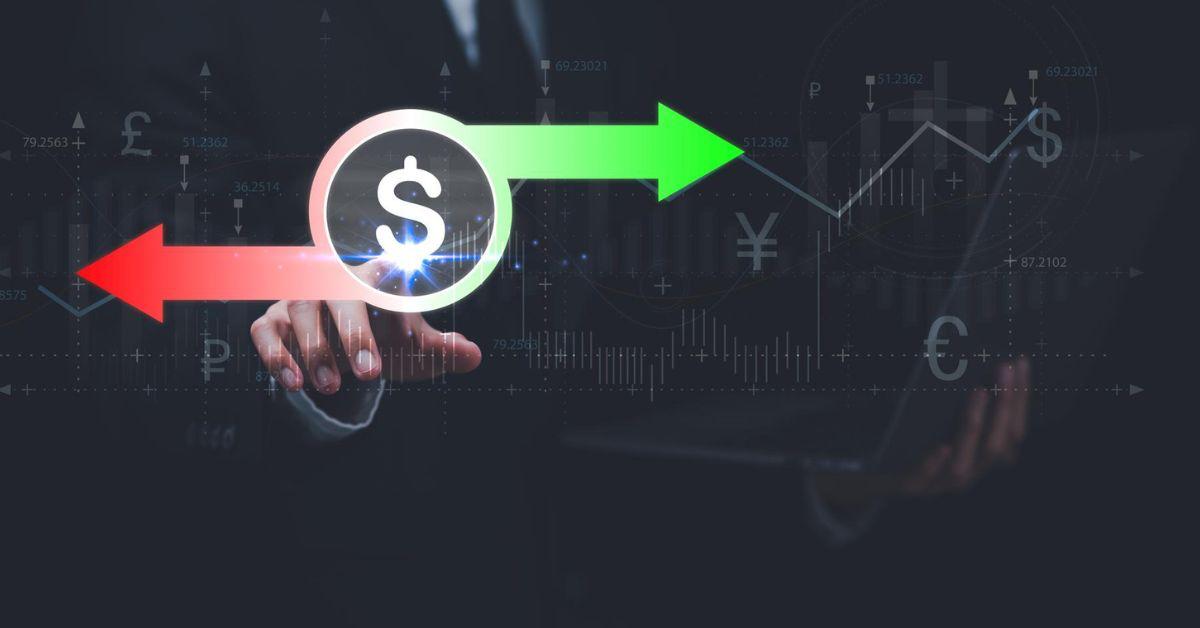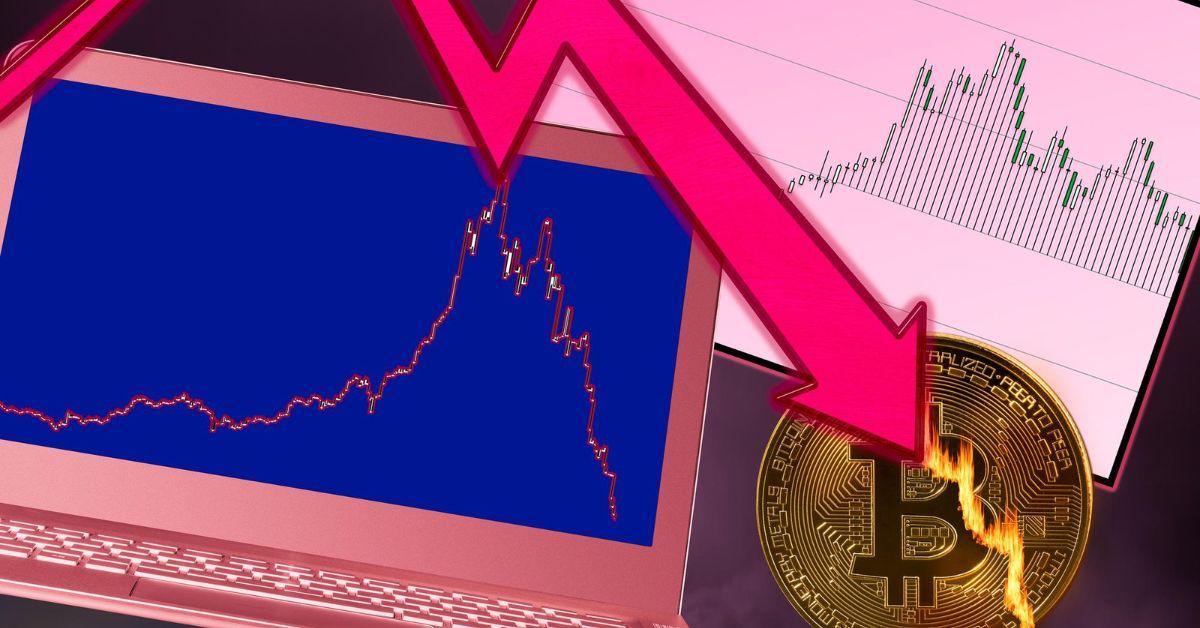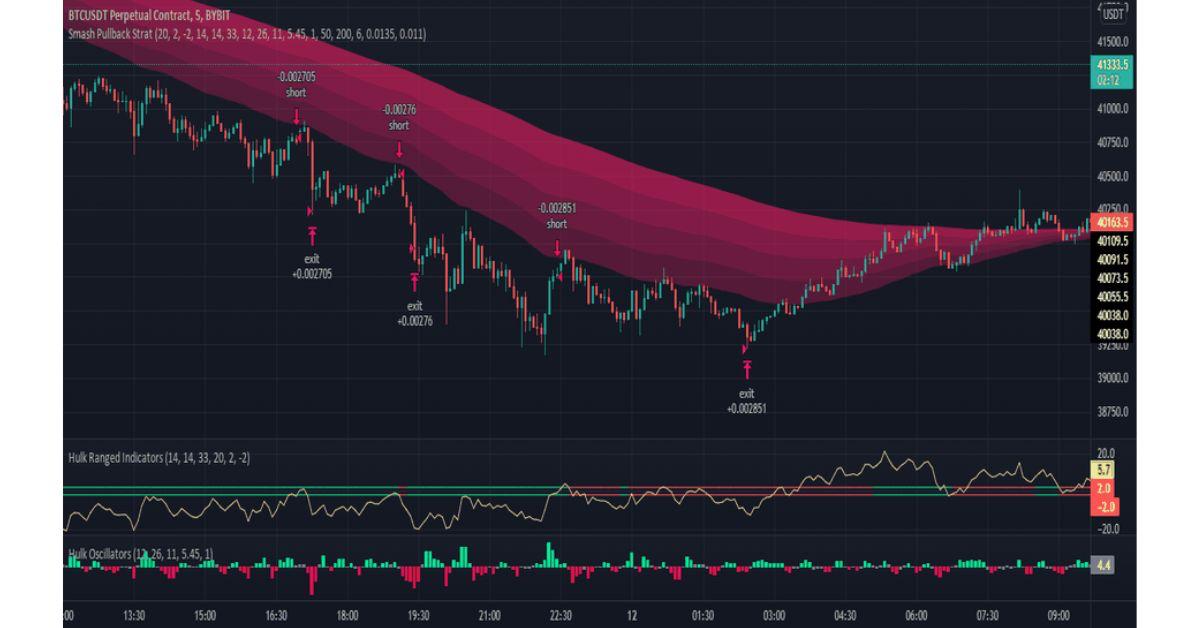Cryptocurrency trading has become increasingly popular, but it’s not without its risks. Many traders wonder, can crypto go negative? The volatile nature of the market means that prices can swing dramatically in a short amount of time, potentially causing losses. In certain situations, your crypto balance could even dip below zero.
Margin trading is a high-risk activity where borrowed funds both magnify gains and losses. Platforms like Prime XBT offer powerful tools for traders to manage their risk. So, join PrimeXBT today! Use promo code PRIMEOTT to receive a +7% bonus on your deposit.
Every trader needs to know how negative balances happen and how to avoid them. In this article, we’ll explore can crypto go negative and offer tips on protecting yourself from these risks. Keep reading to learn more.
What Does it Mean for Crypto to Go Negative?

Cryptocurrency cannot go below zero because of how markets set prices. A product’s value depends on supply and demand. A crypto asset will always have some value as long as there’s a buyer. However, you can still experience significant losses. If a cryptocurrency’s price drops sharply, it affects your portfolio’s value. This isn’t the same as owing more than you invested.With margin trading, you borrow funds to trade.
If the market moves against you, you may owe more than your initial investment. The exchange can automatically liquidate your position to cover the shortfall. Similarly, short selling can cause a negative balance. In this case, you profit by betting on a price decline. However, if the price increases, your losses can be unlimited.To avoid negative balances, it’s crucial to understand margin and leverage. Both can result in owing money if the market moves unfavorably.Why Can
Can Crypto Go Negative?
Cryptocurrency trading can lead to negative balances in specific situations. Here’s why this can happen.
Margin Trading and Leverage
Margin trading involves borrowing funds to increase trade size. While this can amplify profits, it also increases risk. If the market moves against you, you may owe more than your initial deposit. For example, using 10x leverage means a 10% price drop could wipe out your entire investment. In extreme cases, the losses may exceed the original deposit, resulting in a negative balance.
Volatility and Liquidation Risks
Cryptocurrencies are volatile. Prices can fluctuate rapidly, triggering liquidations. If your position falls below a certain threshold, the exchange will automatically sell your assets to cover the debt. In some cases, this may not fully cover the borrowed funds. This leaves you with a negative balance.
Platform-Specific Risks
Each exchange has different rules on negative balances. Some exchanges offer negative balance protection. This means they won’t let you owe more than your account balance. Other platforms may not have this protection, which increases the risk of a negative balance.
Risk Management
To avoid going negative, use risk management strategies. Set stop-loss orders to limit losses. Regularly check your margin levels to ensure they’re sufficient. Many platforms send alerts if you’re at risk of liquidation. Our On Tilt Trading Store offers a reliable stop-loss calculator for managing risk and maximizing profits.
Scenarios Where Crypto Can Go Negative

Cryptocurrency trading can lead to negative balances in several key scenarios. These include margin calls, forced liquidations, and borrowing funds for investments. Let’s break down each situation.
Margin Calls: What Happens When You Can’t Meet Margin Requirements
A margin call occurs when your account’s balance falls below the required margin. In margin trading, you borrow funds to increase the size of your trade. Exchanges require you to maintain a certain amount of collateral to cover your borrowed funds. If the value of your assets drops too much, the exchange will ask you to deposit more funds. In case you don’t add the collateral, the exchange may forcefully liquidate your position. This can result in significant losses and leave you with a negative balance.
Liquidation: When Trades are Forcibly Closed at a Loss
Liquidation occurs when a position is forcibly closed to prevent further losses. If the market moves against you, the value of your assets may fall below the margin requirement. In these cases, the exchange will automatically sell off your assets to cover the borrowed funds. However, if the market is volatile, the liquidation may not fully cover your debt. For example, if a cryptocurrency’s price drops rapidly, the position may be closed at a loss. This leaves the trader owing more than their initial deposit, resulting in a negative balance.
Borrowing Funds: How Borrowing for Crypto Investments Can Amplify Losses
When you borrow funds to invest in cryptocurrency, you are increasing your exposure to market movements. Borrowing amplifies both potential profits and potential losses. A small drop in the value of your investment can result in a large loss.
For example, borrowing 2x or 5x leverage means that any loss is multiplied by the amount borrowed. If the market moves against you, the losses will exceed your initial investment, potentially leading to a negative balance. This is especially risky in the volatile cryptocurrency market.
Risk Factors Leading to Negative Crypto Balances
Several factors can lead to negative crypto balances. These include over-leveraging, market crashes, and exchange policies. Recognizing these risks is vital for every trader.
Over-Leveraging and Its Dangers
Leverage allows traders to borrow funds to increase their trading position. However, over-leveraging can result in significant losses. When you use leverage, even a small price movement can lead to a large change in your balance. If the market goes against you, your losses can quickly exceed your initial investment.
For instance, using 10x leverage means a 10% price drop can wipe out your entire position. In extreme cases, this could result in owing more than your initial deposit, leaving you with a negative balance. Over-leveraging amplifies the risk, especially in volatile markets like cryptocurrency.
The Impact of Market Crashes and Sudden Volatility
Cryptocurrencies are known for their high volatility. Sudden price crashes can quickly lead to negative balances. When the market crashes, positions with leverage may not have enough collateral to cover losses. In some cases, the asset price falls too fast for the exchange to liquidate the position before more money is lost.
For example, Bitcoin’s price dropped 30% in just a few hours during the 2020 market correction. A rapid crash like this can trigger liquidations, resulting in negative balances for leveraged traders. Volatility is a key factor in why crypto can go negative, and it’s a risk every trader should consider.
Exchange Policies on Leverage and Liquidation

Different exchanges have different policies regarding leverage and liquidation. Some exchanges have strict margin requirements, while others are more flexible. In some cases, if you don’t maintain sufficient collateral, the exchange will automatically liquidate your position.
The rules around liquidation and margin calls vary significantly. Some exchanges have “negative balance protection,” while others don’t. Without protection, a trader could end up owing more than their original investment. Being aware of an exchange’s policy is crucial to avoiding the risk of negative balances.
How Different Crypto Platforms Handle Negative Balances
Crypto platforms have different rules for handling negative balances. Some offer protections; others do not. Let’s compare popular exchanges.
Comparing Policies
Exchanges like Coinbase and Binance manage negative balances in different ways.
- Coinbase: Coinbase has a conservative approach to margin trading. It sets strict limits on leverage. If a position falls below the margin requirement, the platform automatically sells the asset. This prevents traders from going into negative balances. Coinbase does not allow negative balances in most situations unless extreme conditions arise.
- Binance: Binance offers higher leverage, making it riskier for traders. When a trader’s position is liquidated, they may owe more than their initial investment. This happens if the liquidation price is lower than expected. Binance’s approach increases the risk of negative balances during volatile times.
Other platforms like Kraken and Gemini follow similar policies but may limit leverage more aggressively.
Protection Mechanisms
Some platforms protect traders from negative balances. This feature can prevent losses beyond the initial investment.
- Platforms with Protection: Platforms like Bitstamp and eToro offer negative balance protection. If the value of a position drops drastically, the trader’s account won’t go below zero. These platforms automatically close positions to protect traders from owing more than their deposit.
- Platforms Without Protection: On platforms like Binance and Bybit, traders may end up with negative balances. This happens if the liquidation process is too slow. Extreme price drops can cause a trader’s balance to fall into the negative. These exchanges do not always guarantee protection from such losses.
Legal and Financial Consequences of a Negative Crypto Balance
A negative crypto balance can have various legal and financial consequences that are important for traders and investors to understand. Here’s a breakdown of some of these issues:
Legal Implications and Platform Terms
The legal consequences of having a negative crypto balance often depend on the terms and conditions of the platform you’re using. The user agreements on most exchanges explain how negative balances are handled, including penalties or repayment requirements.
Failure to comply with these terms could lead to legal action or being banned from the platform. Cryptocurrency is considered property in many jurisdictions, so if your position leads to financial loss, you could face claims for damages.
Effects on Credit and Reputation

While cryptocurrencies themselves don’t directly affect traditional credit scores, a negative balance could still influence your reputation in the crypto market. Some exchanges report to credit agencies, particularly if you’re involved in crypto loans. If you don’t pay back, it could negatively impact your ability to trade.
It may also affect your ability to get loans in the future, both in traditional financial systems and crypto. Traders may also experience challenges in rebuilding trust within the community, especially if they are flagged as high-risk individuals by platforms.
Emotional and Psychological Toll
The emotional toll of dealing with a negative balance can be significant. Many traders experience stress, anxiety, or even depression when they see their accounts go negative.
Cryptocurrency markets are volatile, so it’s hard to know when or if they’ll improve, which can add to the uncertainty. Negative balances can have an emotional impact beyond just financial losses, so it’s important to manage them.
How to Avoid a Negative Crypto Balance: Risk Management Strategies
Managing your crypto investments effectively can help you avoid a negative balance. Several strategies are key to safeguarding your funds and ensuring your trades remain in the green.
Setting Stop-Loss Orders
A stop-loss order automatically sells an asset if its price falls below a set level. This helps prevent significant losses during market downturns. For example, if the price of Ethereum drops below a predefined point, the order triggers an automatic sale to minimize the loss. You can use our stop-loss calculator for the most effective calculation.
Diversifying Investments
Diversification helps reduce the risk of a negative balance. Diversifying your investment portfolio will allow you to spread your risk. If one asset performs poorly, others in your portfolio may still do well, reducing the overall impact.
Using Conservative Leverage

Leverage amplifies both profits and risks. When using leverage, it’s important to use conservative amounts. High leverage can lead to large losses if the market moves against you. Many platforms offer lower leverage options to help manage risk.
Choosing the Right Platform
Select a platform with negative balance protection. This ensures you cannot lose more than your account balance. Platforms offering this feature provide a layer of security during volatile market conditions. Always ensure you’re aware of the platform’s risk management tools.
What to Do If Your Crypto Goes Negative?
Finding yourself with a negative crypto balance can be overwhelming. However, there are steps you can take to handle this situation effectively.
Assess the Situation
Identify what led to your negative balance by understanding why it happened. Determine if it’s due to margin trading, leveraged positions, or an unexpected market downturn. This will help you decide on the best course of action.Contact
Customer Support
Most platforms have support teams that can assist with negative balances. Contacting support can help clarify any charges and learn about possible solutions. Some platforms may offer partial debt forgiveness or set up a payment plan.
Consider Liquidating Assets
If you hold other assets, consider liquidating part of your portfolio to cover the negative balance. This can help restore your account to a positive status and avoid further fees or penalties.
Develop a Repayment Plan
If your platform allows it, arrange a repayment plan to settle the debt gradually. This approach can minimize financial strain while also restoring your trading privileges.
Manage Debt Carefully
After regaining a positive balance, focus on reducing leverage and managing risk carefully to avoid future negative balances. Adjust trading strategies to prioritize stability over aggressive gains.
Taking these steps can help you regain control of your crypto finances and reduce the chance of falling into a negative balance again.
Read More: How Much of Trading is Mental
Bottom Line
In the volatile world of crypto, negative balances can be a serious risk, especially when using leverage. To trade more safely, focus on managing risk, understanding platform policies, and avoiding emotional decisions. Tired of losing money to FOMO, panic selling, or overtrading?
We recommend Vestinda, an app designed to eliminate emotional trading by using automated strategies that simplify crypto investing. Using smart tools and strategies can help you reduce risks and make better decisions while avoiding crypto’s common pitfalls.



